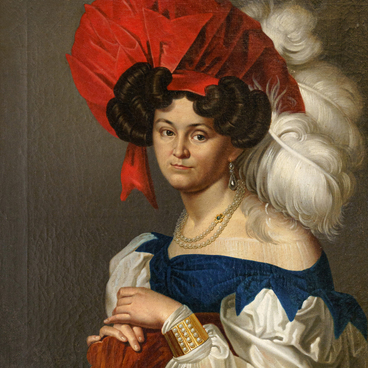Paul (Pavel) Kainovich Dunkers was an artist who worked at the turn of the 20th century and specialized in the genre of ceremonial portraits. Some of his notable works include images of Pavel Mikhailovich Ryabushinsky, Varvara Alekseevna Morozova, and Prince Alexander Petrovich Golitsyn.
It is believed that the portrait on display at the Rybinsk Museum shows a young woman from the Bychkov noble family. The Brity-Bychkov family emerged in the 17th century. They were descendants from the princes of Rostov, thus they rightfully considered themselves descendants of the Rurik dynasty as well. Members of the family owned land in the Rostov and Rybinsk regions of the Yaroslavl Governorate, including the Solygayevo Estate in the Yermakovskaya Volost of the Rybinsk Uyezd.
After nationalization in the 1920s, the portrait was transferred to the Rybinsk Central Library, and a few years later, it joined the museum’s collection.
In the picture, a young woman poses against a backdrop of a beautifully decorated room. The artist has skillfully captured the sitter’s appearance. She is wearing a white dress that was fashionable in the late 19th century, with an exaggerated horizontal protrusion at the back. This was achieved by using a special padded undergarment that was placed at the back of the dress. The woman’s high, intricate hairstyle is adorned with daisies, and an elegant boutonnière (buttonhole) is pinned to the collar of her dress. These flowers enhance her delicate and charming appearance and balance the different elements of her sophisticated outfit.
Another interesting accessory is the folding fan, which women used to create a refreshing air current. In everyday culture of aristocratic households, great significance was attached to every item, including the fan. In the 19th century, it became customary to select accessories based on the color and texture of the outfit, as seen in this portrait. In the article “The Fan in Russian Everyday Culture of the 18th and 19th Centuries and Museum and Exhibition Spaces” by Marina Vladimirovna Korotkova, a doctor of historical sciences, one can read,

